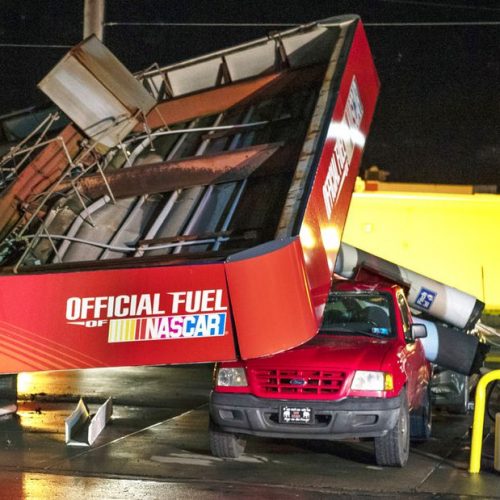Tornado frequency has increased across the eastern third of the United States and especially across the mid-South, according to a new study in the journal Climate and Atmospheric Science.
While tornadoes have increased in the East, there has been a notable decrease in twister activity across a large chunk of the Southern Plains of Texas and Oklahoma as well as the high plains of Colorado. These focal zones are among a broad downward trend across the Plains — historically known as tornado alley.
These are problematic changes, given the tendency for the shift to place increased tornado activity over a particularly vulnerable region, the study says. It found the starkest increase in tornado frequency across a region including Mississippi, Alabama, Arkansas, Missouri, Illinois, Indiana, Tennessee and Kentucky.
This was already the deadliest terrain for tornadoes in the country on average, given multiple factors, such as greater population density than areas farther west. There are also more trees and less visibility, more weak dwellings and a tendency for the development of fast-moving storms that spawn nighttime tornadoes, which are the deadliest.
The authors also point to increased variability in the year-to-year number of tornadoes.
The 2010s have demonstrated this: 2010 was active, then 2011 was the year of the “super outbreak,” among many tornado events. Since then, a majority of tornado years have been relatively quiet. That’s the theme of 2018, as it threatens to become the first in modern history with no recorded tornadoes rated EF4 or higher (on the 0-5 scale).
The study was written by Vittorio Gensini and Harold Brooks, authoritative figures on the subject of severe weather and tornadoes. Gensini is a professor of atmospheric sciences at Northern Illinois University, and Brooks is a scientist at the federal government’s National Severe Storms Laboratory in Oklahoma.
For a number of years, ideas about shifting tornado frequency — a nudging to the east of the traditional hottest spots in the Plains — have floated around, but little hard data has supported them.
“[W]e believe these trends in tornado environments are significant and have not been documented with this level of detail by previous research,” Gensini and Brooks write in the study.
The authors used a metric known as the Significant tornado parameter (STP) to approximate tornado activity over the years in their study (1979-2017). It is a complicated index of twister ingredients that measures the potential potency of a tornado environment.
“[We found] a robust downward trend in the annual accumulation of STP across the central and southern Great Plains,” the study says. “Meanwhile, a robust upward trend is found in portions of the Southeast, Midwest, and Northeast.”
Gensini and Brooks compare findings using STP to actual tornado reports to validate their findings. There are many similarities plus a few conflicts. One advantage that STP has over actual reports is that it is not affected by the rise in weather spotters and better detection capabilities that have pushed up the number of weak tornadoes observed in recent decades.
The study found that in a majority of locations, agreement between STP environments and reporting was strong. The mid-South, in particular, has shown a significant increase in STP environments and tornado confirmations. They are less confident in some areas, such as eastern Kansas, as an example. It’s something of a battleground between increasing activity east and decreasing west. In this area, reports have increased, but the environment conducive to twisters has degraded over recent times.
With climate change ongoing in the background, a question of how shifts in tornado activity are related is an obvious one.
The answer to the climate change question is still to be determined, the study says. One inherent difficulty in assessing possible connections between climate change and tornadoes is that we are just beginning to understand tornado behavior and patterns, which are fickle.
While there are basic truths, such as that tornado frequency tends to cluster in spring (though even this might be changing), detecting signals in the data is difficult. Swarms of twisters tend to come in spurts. A few big days or a big week can help make a month or even a year an active one. Those active stretches are often followed by breaks, both seasonally and across multiple years.
With these facts in mind, previous studies have indicated that severe weather frequency in portions of the Midwest and Southeast should increase by the end on the 21st century as the climate warms. This is generally the same region where Gensini and Brooks identified the recent tornado increase.
Gensini told the Associated Press that while “we don’t know” the cause of the shifts seen, “[t]his is super consistent with climate change.”
by Ian Livingston (2018, October 17) The Washington Post


